JPAC ~ Honoring the Pledge
Joint POW/MIA Accounting Command
 Tech. Sgt. Valda Wilson, a U.S. Air Force photographer, hauls buckets of dirt to the screening station so that it can be filtered for human remains as well as other evidence that would lead to the identification of a missing servicemember. Defense Dept. photo by Fred W. Baker III
Tech. Sgt. Valda Wilson, a U.S. Air Force photographer, hauls buckets of dirt to the screening station so that it can be filtered for human remains as well as other evidence that would lead to the identification of a missing servicemember. Defense Dept. photo by Fred W. Baker III Joint POW/MIA Accounting Command forensic anthropologist Denise To examines debris that was recovered at a site in a wheat field outside of Strass village in Germany. The JPAC recovery team was there last month to recover the remains of a missing World War II fighter pilot. Defense Dept. photo by Fred W. Baker III
Joint POW/MIA Accounting Command forensic anthropologist Denise To examines debris that was recovered at a site in a wheat field outside of Strass village in Germany. The JPAC recovery team was there last month to recover the remains of a missing World War II fighter pilot. Defense Dept. photo by Fred W. Baker III  Test trenches are dug into a wheat field outside of Strass village in Germany. The Joint POW/MIA Accounting Command recovery team was there last month to recover the remains of a missing World War II fighter pilot. Defense Dept. photo by Fred W. Baker III
Test trenches are dug into a wheat field outside of Strass village in Germany. The Joint POW/MIA Accounting Command recovery team was there last month to recover the remains of a missing World War II fighter pilot. Defense Dept. photo by Fred W. Baker III Army Staff Sgt. Jason Powers, JPAC recovery team noncommissioned officer, sweats as he screens dirt at a recovery site in Germany. Defense Dept. photo by Fred W. Baker III
Army Staff Sgt. Jason Powers, JPAC recovery team noncommissioned officer, sweats as he screens dirt at a recovery site in Germany. Defense Dept. photo by Fred W. Baker III There are many things done quietly in this country that do not get the recognition that they deserve. JPAC is one of them. Aided by modern technology and the willingness to continue the search, the Joint POW/MIA Accounting Command is identifying remains of our missing warriors from past conflicts.
JPAC Teams Serve on Front Lines of Recoveries
By Fred W. Baker III
American Forces Press Service
WASHINGTON, Sept. 18, 2008 -
Tech. Sgt. Valda Wilson is an Air Force photographer. But last month in a harvested wheat field in the village of Strass near Germany's Hurtgen Forest, she spent most of her days with her hands full of dirt.
Wilson is one of about 10 members of a Joint POW/MIA Accounting Command team who deployed there in the hopes of recovering the remains of a missing P-38 Lightning fighter pilot downed in combat during World War II.
While Wilson's main job is to help the team anthropologist document the mission, all team members on site, regardless of specialty, get their hands dirty.
"Everybody digs. There's nobody on this team who is so special that they don't dig," Wilson said. "I want to be a part of the entire process. We're all expected to pull our weight. And part of pulling your weight is digging, moving dirt."
JPAC teams deploy on about 70 missions annually to some of the most remote locations in the world. Their work can take them to the tops of mountains and deep into jungles. This year, so far, team travels include Cambodia, Vietnam, Laos, Papua New Guinea, South Korea, Japan, Canada, Belgium, Poland and Hungary.
Team members are deployed an average of more than 100 days per year. The work can be monotonous, back-breaking and dangerous, but you rarely hear a team member complain, said Marine Master Sgt. Jonathan Couturier, a recovery team leader.
"When you look down and find some bones, that really hits you," Couturier said. "You know that's one of our own. If that doesn't keep you going, I don't know what does."
The JPAC has 18 recovery teams and each includes an anthropologist, a team leader, an explosive ordnance technician, a medic and a photographer. They are a combination of ranks and services and often are augmented with servicemembers from other commands. Many times, locals are hired to help. Because the missions are considered humanitarian, the team members do not wear military uniforms.
The process that leads to a recovery team excavating a site begins at JPAC headquarters in Hawaii months or years before teams put boots on the ground. Historians piece together information from databases, tips that come in from around the world and information in case files to determine, first, if the site is likely to yield the remains of missing servicemembers. Often, a research team is sent out first to talk to local residents, interview any witnesses, meet with local government officials and lay the groundwork for the mission.
Once on site, the anthropologist surveys the area, mapping out the site to take into account its topography and history for establishing a site grid for digging. Then, they develop an excavation strategy.
Sites can be as small as a few meters and as large as a football field. Excavation strategies vary depending on location and the type of site and whether the team is searching for a single burial or remains alongside a plane crash. Many times, where to start digging is determined by a combination of aerial reconnaissance, witness statements, metal detection sweeps, and the basic gut instinct of the anthropologist, said Denise To, a forensic anthropologist for the Central Identification Lab at the JPAC.
To has worked about 10 sites, mostly in Southeast Asia. This was her first excavation in Europe.
"I love it. It's very rewarding," she said. "There are very few dull days. [There are] many days where something happens and you are just in awe and you are speechless."
As the anthropologist maps out the strategy, the rest of the team begins working the logistics of the site, building a screening station, pitching tents or building shelters, setting up storage areas and latrines. The team is set up and ready to dig on the first day there. If possible, the team will stay in area hotels, but in many areas the remoteness of the site dictates that they camp onsite.
Once the strategy is in place, digging begins. Backhoes are sometimes used to trench until remains are found. Wheelbarrow after wheelbarrow of dirt is taken to the screening stations. Hundreds of buckets are filled for dumping into the screens.
The screening stations vary in size, depending on how many people are manning the stations. It can be only a handful of screens, or as many as 50 if many locals are hired to help.
The screens are one-quarter-inch mesh affixed to rectangular frames of one-inch-by-four-inch boards. They dangle from a support beam that allows team members to push and pull the screen freely as they filter the dirt from the rocks and other materials.
It's a tedious process that starts by dumping a bucket of dirt into the screen, shaking it, running gloved hands over the remaining material, picking at the debris with trowels and throwing away the rocks, sticks or roots.
Team members are trained on what to look for before they deploy. But, for the most part, they are looking for anything that is man-made. When in doubt, the rule is to throw it in a bucket and let the anthropologist review it, To said.
Besides bones, the team looks for dog tags, buttons, eye glasses, clothing, or anything that can help identify that the remains are of the servicemember they are looking for. Most airplane pieces and other debris are not kept, only items that can help make an identification.
The teams can go through hundreds of buckets of dirt each day. To break the monotony, they joke, play music and take breaks. They also switch duties, and each member spends time digging with the back hoe, shoveling, moving the dirt from the site to the screens by wheelbarrows, filling buckets with dirt and retrieving empty buckets.
At the site in Germany, the group went four days before the impact crater of the aircraft was found. It can be both frustrating and monotonous for the team, To said. But once the crew hits pay dirt, its motivation spikes.
"Once we find things the attitude instantly changes, and you get up every morning and you realize why you are doing what you are doing," To said. "And no matter hard I make the team work and how much I make them shovel, they don't complain because they know that what they're doing is nowhere near as bad as having to wait for your loved one to come home for 60 years."
The team reads up on the historical case files of those they are looking for, which can create a personal connection beyond the details of the work. Wilson said that while the work can be mundane, it is always in back of her mind that they are looking for a missing servicemember.
"You don't want to lose sight of that. When you lose sight of that, why are you even here?" she said.
Recovery operations wrapped up at the site in Germany early this month, with the teams finding osseous material, or bones, and possible material evidence. Lab tests will allow them to determine whether the remains are those of the missing pilot.
At the site, the team also recovered a significant amount of aircraft wreckage, as well as two complete and intact 1,000-pound bombs. That site was closed and there are no plans to return, To said.
All human material is cataloged, photographed, and its location annotated. It is then placed in transport containers, sealed with evidence tape and kept in double-locked containers until it is returned to the JPAC headquarters. An arrival ceremony is held in Hawaii. While the identification could be months or years away, the ceremony is a symbolic gesture of the remains' return to American soil.
Most team members are off to another site by the time remains are identified and families are notified, but they often keep up on the cases. In To's role, though, she sometimes is able to see the case develop from start to finish.
"It makes the job so worthwhile when you're able to hand the remains over to a family member," To said. "It's as if they lost that person yesterday. It doesn't matter that 60 years went by."
For Couturier, who has done two tours in Iraq, the team's work is a promise kept, he said.
"This is a commitment that America has made to all of our fallen heroes," Couturier said. "I can't think of anything more honorable to do. We're in a war and we're still doing this."
But for Wilson, the job is even more personal. She has sweated through 11 missions including trips to Vietnam, Cambodia, Laos and Thailand. She has eaten ants and porcupine.
In the end, Wilson is doing for her fellow servicemembers what she would want done for herself.
"If I was out here I would want somebody to come and get me," she said.
For further information:http://www.defenselink.mil/home/features/2008/0908_jpac/index.html
WASHINGTON, Sept. 18, 2008 -
Tech. Sgt. Valda Wilson is an Air Force photographer. But last month in a harvested wheat field in the village of Strass near Germany's Hurtgen Forest, she spent most of her days with her hands full of dirt.
Wilson is one of about 10 members of a Joint POW/MIA Accounting Command team who deployed there in the hopes of recovering the remains of a missing P-38 Lightning fighter pilot downed in combat during World War II.
While Wilson's main job is to help the team anthropologist document the mission, all team members on site, regardless of specialty, get their hands dirty.
"Everybody digs. There's nobody on this team who is so special that they don't dig," Wilson said. "I want to be a part of the entire process. We're all expected to pull our weight. And part of pulling your weight is digging, moving dirt."
JPAC teams deploy on about 70 missions annually to some of the most remote locations in the world. Their work can take them to the tops of mountains and deep into jungles. This year, so far, team travels include Cambodia, Vietnam, Laos, Papua New Guinea, South Korea, Japan, Canada, Belgium, Poland and Hungary.
Team members are deployed an average of more than 100 days per year. The work can be monotonous, back-breaking and dangerous, but you rarely hear a team member complain, said Marine Master Sgt. Jonathan Couturier, a recovery team leader.
"When you look down and find some bones, that really hits you," Couturier said. "You know that's one of our own. If that doesn't keep you going, I don't know what does."
The JPAC has 18 recovery teams and each includes an anthropologist, a team leader, an explosive ordnance technician, a medic and a photographer. They are a combination of ranks and services and often are augmented with servicemembers from other commands. Many times, locals are hired to help. Because the missions are considered humanitarian, the team members do not wear military uniforms.
The process that leads to a recovery team excavating a site begins at JPAC headquarters in Hawaii months or years before teams put boots on the ground. Historians piece together information from databases, tips that come in from around the world and information in case files to determine, first, if the site is likely to yield the remains of missing servicemembers. Often, a research team is sent out first to talk to local residents, interview any witnesses, meet with local government officials and lay the groundwork for the mission.
Once on site, the anthropologist surveys the area, mapping out the site to take into account its topography and history for establishing a site grid for digging. Then, they develop an excavation strategy.
Sites can be as small as a few meters and as large as a football field. Excavation strategies vary depending on location and the type of site and whether the team is searching for a single burial or remains alongside a plane crash. Many times, where to start digging is determined by a combination of aerial reconnaissance, witness statements, metal detection sweeps, and the basic gut instinct of the anthropologist, said Denise To, a forensic anthropologist for the Central Identification Lab at the JPAC.
To has worked about 10 sites, mostly in Southeast Asia. This was her first excavation in Europe.
"I love it. It's very rewarding," she said. "There are very few dull days. [There are] many days where something happens and you are just in awe and you are speechless."
As the anthropologist maps out the strategy, the rest of the team begins working the logistics of the site, building a screening station, pitching tents or building shelters, setting up storage areas and latrines. The team is set up and ready to dig on the first day there. If possible, the team will stay in area hotels, but in many areas the remoteness of the site dictates that they camp onsite.
Once the strategy is in place, digging begins. Backhoes are sometimes used to trench until remains are found. Wheelbarrow after wheelbarrow of dirt is taken to the screening stations. Hundreds of buckets are filled for dumping into the screens.
The screening stations vary in size, depending on how many people are manning the stations. It can be only a handful of screens, or as many as 50 if many locals are hired to help.
The screens are one-quarter-inch mesh affixed to rectangular frames of one-inch-by-four-inch boards. They dangle from a support beam that allows team members to push and pull the screen freely as they filter the dirt from the rocks and other materials.
It's a tedious process that starts by dumping a bucket of dirt into the screen, shaking it, running gloved hands over the remaining material, picking at the debris with trowels and throwing away the rocks, sticks or roots.
Team members are trained on what to look for before they deploy. But, for the most part, they are looking for anything that is man-made. When in doubt, the rule is to throw it in a bucket and let the anthropologist review it, To said.
Besides bones, the team looks for dog tags, buttons, eye glasses, clothing, or anything that can help identify that the remains are of the servicemember they are looking for. Most airplane pieces and other debris are not kept, only items that can help make an identification.
The teams can go through hundreds of buckets of dirt each day. To break the monotony, they joke, play music and take breaks. They also switch duties, and each member spends time digging with the back hoe, shoveling, moving the dirt from the site to the screens by wheelbarrows, filling buckets with dirt and retrieving empty buckets.
At the site in Germany, the group went four days before the impact crater of the aircraft was found. It can be both frustrating and monotonous for the team, To said. But once the crew hits pay dirt, its motivation spikes.
"Once we find things the attitude instantly changes, and you get up every morning and you realize why you are doing what you are doing," To said. "And no matter hard I make the team work and how much I make them shovel, they don't complain because they know that what they're doing is nowhere near as bad as having to wait for your loved one to come home for 60 years."
The team reads up on the historical case files of those they are looking for, which can create a personal connection beyond the details of the work. Wilson said that while the work can be mundane, it is always in back of her mind that they are looking for a missing servicemember.
"You don't want to lose sight of that. When you lose sight of that, why are you even here?" she said.
Recovery operations wrapped up at the site in Germany early this month, with the teams finding osseous material, or bones, and possible material evidence. Lab tests will allow them to determine whether the remains are those of the missing pilot.
At the site, the team also recovered a significant amount of aircraft wreckage, as well as two complete and intact 1,000-pound bombs. That site was closed and there are no plans to return, To said.
All human material is cataloged, photographed, and its location annotated. It is then placed in transport containers, sealed with evidence tape and kept in double-locked containers until it is returned to the JPAC headquarters. An arrival ceremony is held in Hawaii. While the identification could be months or years away, the ceremony is a symbolic gesture of the remains' return to American soil.
Most team members are off to another site by the time remains are identified and families are notified, but they often keep up on the cases. In To's role, though, she sometimes is able to see the case develop from start to finish.
"It makes the job so worthwhile when you're able to hand the remains over to a family member," To said. "It's as if they lost that person yesterday. It doesn't matter that 60 years went by."
For Couturier, who has done two tours in Iraq, the team's work is a promise kept, he said.
"This is a commitment that America has made to all of our fallen heroes," Couturier said. "I can't think of anything more honorable to do. We're in a war and we're still doing this."
But for Wilson, the job is even more personal. She has sweated through 11 missions including trips to Vietnam, Cambodia, Laos and Thailand. She has eaten ants and porcupine.
In the end, Wilson is doing for her fellow servicemembers what she would want done for herself.
"If I was out here I would want somebody to come and get me," she said.
For further information:http://www.defenselink.mil/home/features/2008/0908_jpac/index.html
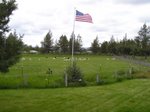













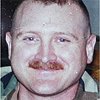


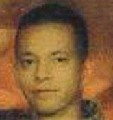









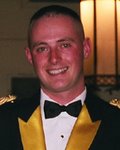






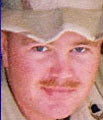
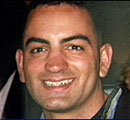




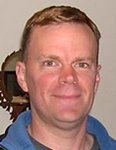
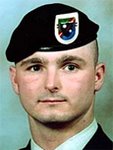


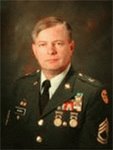

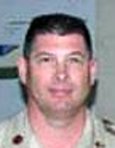
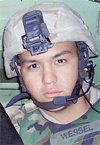
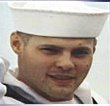
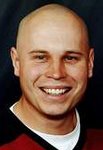
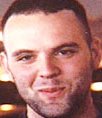
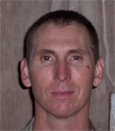

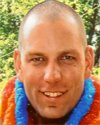
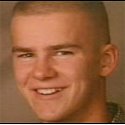
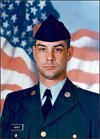


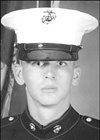
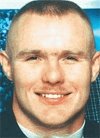
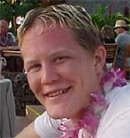

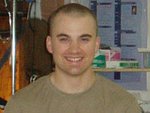




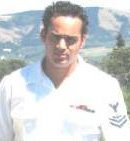

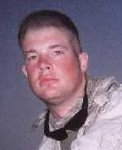
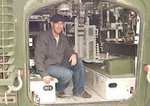
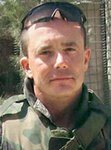



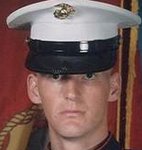
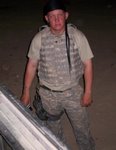
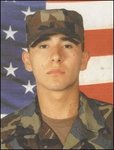
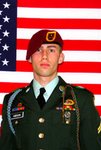

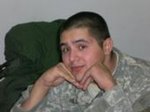
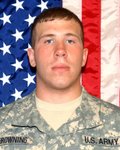





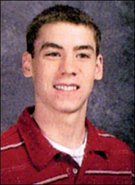
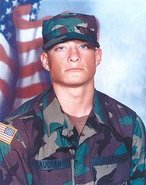
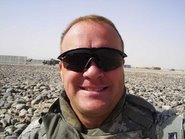
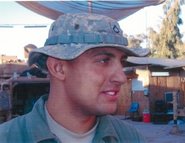
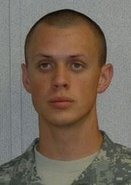
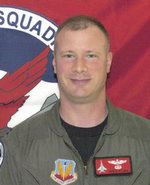
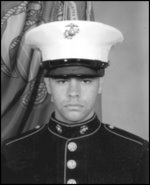
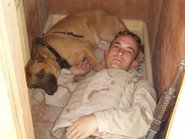
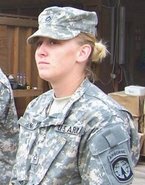
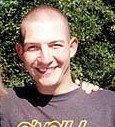
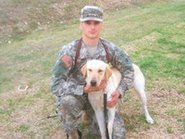

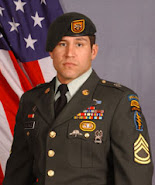






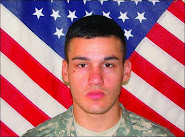



No comments:
Post a Comment